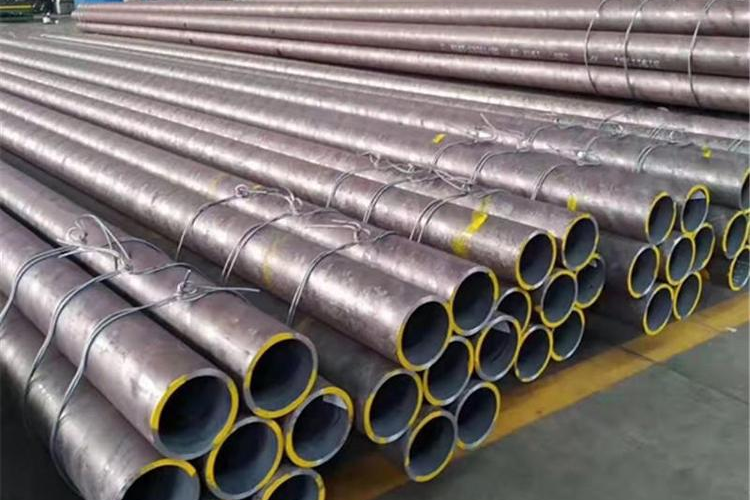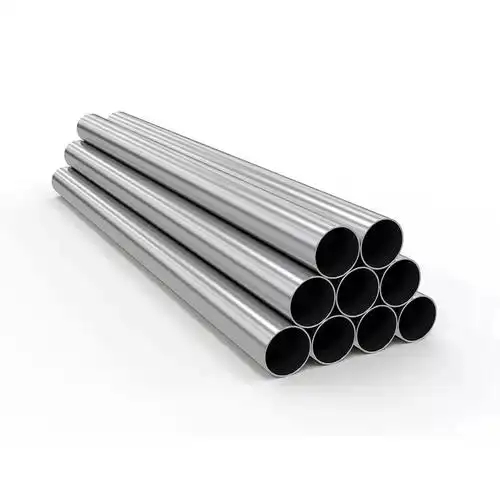ASTM A106/A106M seamless steel pipe ASTM A106/A106M “Specification for Seamless Carbon Steel Pipe for High Temperature Service”
Product grades: Grade B, Grade C
Product specifications: Outer diameter 10.3mm – 762mm, Wall thickness 2.0 – 130mm
Production methods: Hot rolling, Cold drawing, Hot expanding
Delivery conditions: Hot rolled, Heat treated
Confirmed to comply with TSGD7002 “Rules for Type Testing of Pressure Pipeline Components” through type testing.
Seamless steel pipe manufacturers’ production and manufacturing methods can be classified into hot-rolled pipes, cold-rolled pipes, cold-drawn pipes, and extruded pipes, etc., based on different production methods. Hot-rolled seamless steel pipes are generally produced on automatic pipe rolling machines. Solid tube billets are inspected and surface defects are removed, then cut to the required length. The end face of the tube billet is centered at the piercing end, and then sent to the heating furnace for heating. Piercing is carried out on the piercing machine. During piercing, it continuously rotates and advances. Under the action of the rolls and the piercing tip, an empty cavity gradually forms inside the tube billet, which is called a rough pipe. It is then sent to the automatic pipe rolling machine for further rolling. Finally, the wall thickness is evened out by the sizing machine and the diameter is sized by the sizing machine to meet the specification requirements. The use of continuous pipe rolling machines to produce hot-rolled seamless steel pipes is a relatively advanced method.
- A106 steel pipe is a seamless steel pipe manufactured according to ASME A106A, A106B, and A106C standards, with different tensile strengths and yield strengths.
- The tensile strength of A106A steel pipe is 330MPa, and the yield strength is 205MPa; the tensile strength of A106B steel pipe is 415MPa, and the yield strength is 240MPa; the tensile strength of A106C steel pipe is 485MPa, and the yield strength is 275MPa.
- The chemical composition of A106 seamless steel pipes mainly includes iron, carbon, silicon, manganese, and other elements. Iron is the main component, with carbon content typically ranging from 0.08% to 0.35%, silicon content generally not exceeding 0.5%, and manganese content ranging from 0.15% to 1.65%.
- The combination of these elements endows the steel pipe with its physical and chemical properties, ensuring its stability and durability in high-temperature and high-pressure environments.
- A106 steel pipes are widely used in the oil, chemical, power, and shipbuilding industries, especially in high-pressure fluid transportation pipeline systems, where their excellent mechanical properties and corrosion resistance make them key materials.
- In summary, A106 steel pipes not only have excellent physical properties but also good chemical stability, making them have broad application prospects in many industrial fields.
- When using A106 steel pipes, the reasonable selection of the steel pipe grade can better meet the requirements of different working conditions, thereby ensuring the safe operation of the system.
A106 Gr. C seamless steel pipe in stock
Main product sizes and types of American standard seamless steel pipe manufacturers. Export American standard steel pipes are in accordance with ASTM A106 Gr. B standards. ASTM A53 GR.B; API SPEC 5L GR.B; BS1387; ASTM A179; ASTM A192; ASTM A335; ASTM production method API 5L GR.B seamless steel pipe / American standard steel pipe SA213T5 seamless steel pipe / American standard steel pipe, GB/T8163-2018 (Seamless steel pipe for fluid conveyance). American standard ERW high-frequency welded pipe LSAW double-sided submerged arc welded pipe, specifications: 1/4″ – 36″, 13.7 – 914mm. American standard ERW high-frequency welded pipe ASTM A53, specifications: 1/2″ – 20″, 21.3 – 1060mm. British standard ERW high-frequency welded pipe BS1387, specifications: 1/2″ – 6″, 21.3 – 1860mm. API5L American standard seamless steel pipe generally has materials such as ASTM A106 A53, which can be replaced by domestic 20# steel. The packaging requirements for American standard steel pipe exports are also very strict, including fixed length, bundling, painting, pipe caps, and marking. This is mainly because they are afraid of seawater corrosion during sea voyages. For example, the stressed parts of automobiles and tractors. Generally, seamless steel pipes need to ensure strength and flattening tests. Hot-rolled seamless steel pipes are delivered in hot-rolled or heat-treated conditions; cold-rolled ones are delivered in heat-treated conditions.










